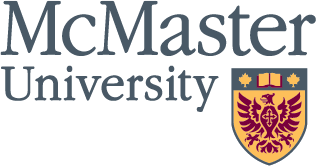Troubled waters: New U.S. policies put Canada’s water security at risk, expert warns

With fewer regulations and environmental protections, Canadians can expect more pollution, invasive species and aquatic degradation in the Great Lakes and other water bodies, Gail Krantzberg says.
February 21, 2025
With the possibility of fewer environmental protections under U.S. President Donald Trump, experts are warning about the impact on Canada’s water security and resources, and environmental, health, and economic risks.
Gail Krantzberg, professor emeritus in McMaster’s W Booth School of Engineering Practice and Technology, has studied the remediation and protection of the Great Lakes for years.
She shares some insights and suggestions for Canadians interested in protecting water resources.
When we first talked about the impact of Donald Trump, you said: “These are dangerous times for our waters.” What did you mean by that?
Donald Trump’s approach to regulation poses a serious threat to our waters. He believes less regulation is better. He believes in reducing regulations on industries like mining, oil exploration, and manufacturing, which often leads to higher discharge of pollutants being released into the environment. In our case, this could directly affect the Great Lakes and other water bodies in Canada.
Under the Biden administration, there was a move to ban a class of substances known as PFAS. These are long-lasting synthetic chemicals that build up in our bodies and in aquatic life, leading to serious health issues like cancer, kidney and liver damage and reproductive impairment. Trump is rolling that back, allowing PFAS to remain in products, and therefore in our waters.
Another major concern is the weakening of the U.S. Environmental Protection Agency (EPA). Revoking their authority to conduct environmental assessments for government undertakings, such as building a dam or dredging, will result in more aquatic degradation.
Climate change is another significant issue. The climate has changed. It is not going back to what it was, but we shouldn’t make it any worse. We are already seeing more extreme weather events like floods, prolonged droughts and wildfires.
Trump is pulling out of the Paris Accord, he wants to “drill baby drill” —that’s more carbon emissions. To me, these are clear signals that the threats to our waters are increasing.
Pre-Donald Trump, how would you characterize the relationship between Canada and the U.S. in terms of shared water?
It was excellent. Regardless of which political parties were in power, Canadian and U.S. bureaucrats worked closely together. They have an agreement called the Great Lakes Water Quality Agreement, originally signed in 1972 and revised several times, most recently in 2012. This agreement focuses on protecting the Great Lakes by addressing issues like nutrient pollution, invasive species and climate change.
There is also a joint monitoring and surveillance program between the two countries, sharing research vessels and lake sampling platforms.
The International Joint Commission, which is a treaty organization established in 1909 to protect shared waters, evaluates the progress of both governments and makes recommendations for improvement. The commission consists of six members appointed by the president of the United States and the prime minister of Canada, who pledge to protect the shared waters of both nations.
Even during Trump’s first term, the commissioners appointed by his administration continued to prioritize the protection of these shared waters due to their importance to both countries.
We do not know what will happen with the U.S. commissioners in Trump 2.0.
Can you elaborate on the importance of the Great Lakes?
The Great Lakes represent significant economic prosperity, contributing at least $7 trillion to the economy of the region. Forty million people on both sides of the border rely on the Great Lakes for safe drinking water, recreation, fisheries and industries.
If the Great Lakes region was a country, it would have the third largest GDP in the world.
A laissez-faire approach, the dismantling of the EPA and the silencing of federal scientists could hamper efforts to stop the introduction of non-native species.
By not enforcing laws that prohibit ships from discharging their ballast water into the Great Lakes, we could see the introduction of more invasive species. This could harm and even destroy fisheries and habitats and affect the cultural heritage of Indigenous peoples who rely on the water and its biodiversity.
The Great Lakes are also a major tourism attraction. If the water is polluted by raw sewage, people won’t be able to swim in the lakes without getting sick. This has health-care implications as well.
Do you get the sense that people appreciate the importance of the Great Lakes and having a reliable supply of water?
Canadians tend to believe we’re a water-rich nation — especially in Quebec, Ontario and Manitoba — and are complacent about our water. With Trump coming on board, it’s important to understand where our water comes from and where it goes after use.
People often don’t know where their water comes from. They might say “the city,” but not realize it comes from Hamilton Harbour, Lake Ontario, or a nearby river. The quality of the water in the Great Lakes directly affects their health and well-being.
Trump suggested California could alleviate its water shortages by tapping into a water source in British Columbia, which he described as a “very large faucet” that could just be turned on. What are your thoughts on that?
Trump’s suggestion about a faucet in B.C. should concern Canadians. It’s crucial that people start thinking about the potential impact of Trump’s policies on our water resources, not just in British Columbia, but across the entire continent. If he’s considering taking B.C.’s water to fight fires in California, what about our Great Lakes that support a $7 trillion economy?
While it’s technically possible to pump water from the Great Lakes to other locations, it’s not a simple or practical solution. The Great Lakes-St. Lawrence Sustainable Water Resources Act mandates that any water taken from the lakes must be returned, and it is only allowed for specific emergency purposes, like firefighting and drinking water. Pumping water back over long distances would be prohibitively expensive and difficult.
If Trump were to dismantle this act, and if Congress or judicial review fails to intervene, the consequences could be severe. The Great Lakes’ nearshore and coastal areas, essential for fisheries and wildlife, would be at risk. Wetlands could be destroyed if too much water is diverted.
I’m hopeful that both U.S. governors and Canadian premiers would oppose such a move. However, given the current unpredictability of politics, it’s hard to say for certain.
I recently attended a meeting with experts discussing the scientific research needed to protect the Great Lakes in the future. This effort will require significant funding. One of the members emphasized that to protect our research, which is directed at transboundary water excellence, we need to portray to the U.S. that the waters of the Great Lakes represent economic prosperity, which is crucial for the Trump administration.
What can people do if they are concerned?
Be an advocate. Talk to your members of Parliament and insist that they protect the Great Lakes and uphold the act that prohibits withdrawals. Share your concerns with friends and mobilize resistance against harmful actions like diverting water from the Great Lakes.
It’s also important to understand where your drinking water comes from. For example, when you flush your toilet, the wastewater goes to a treatment plant and then back into the Great Lakes. The same Great Lakes provide your drinking water. That loop is not considered enough. Think about the products you use and how they might affect the water cycle.
Protecting our water sources is crucial for our health and environment. As Indigenous peoples have been telling us for decades: Water is life.


